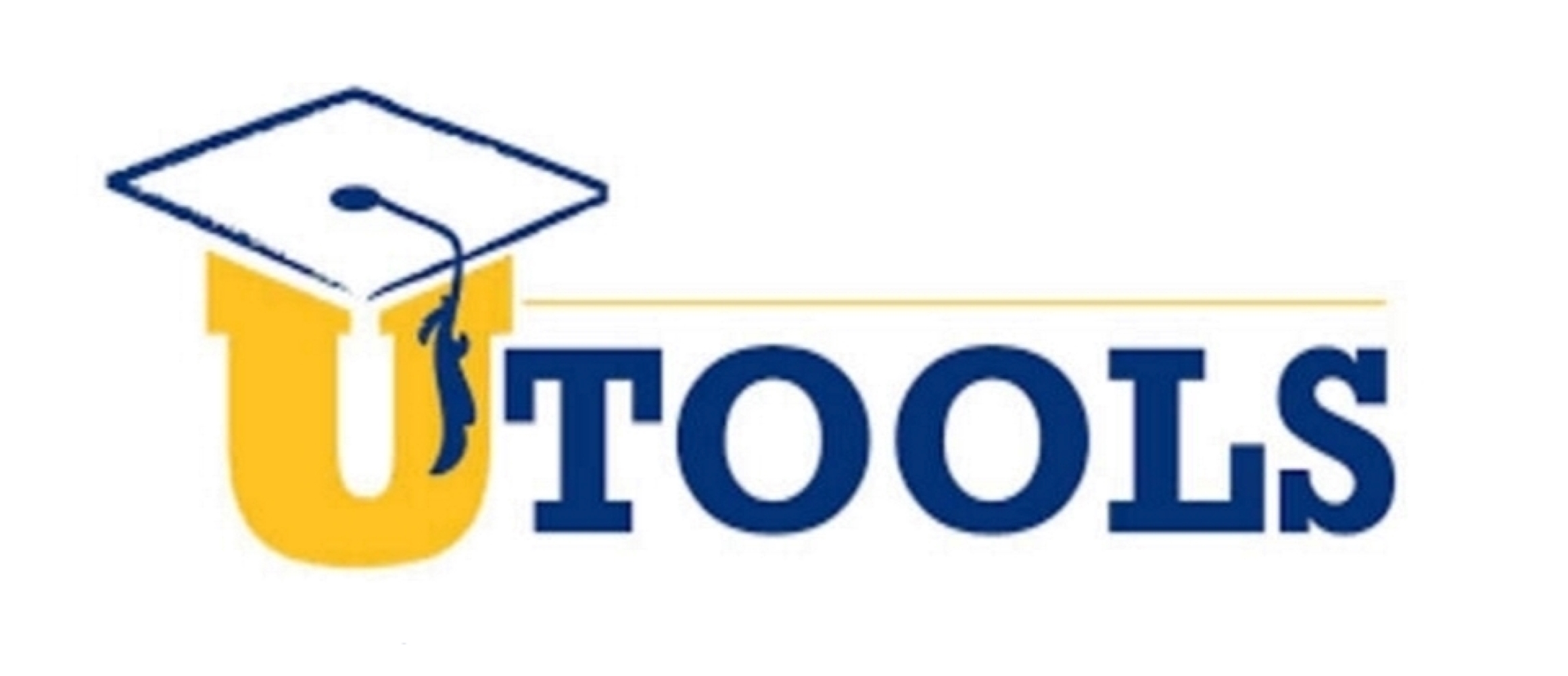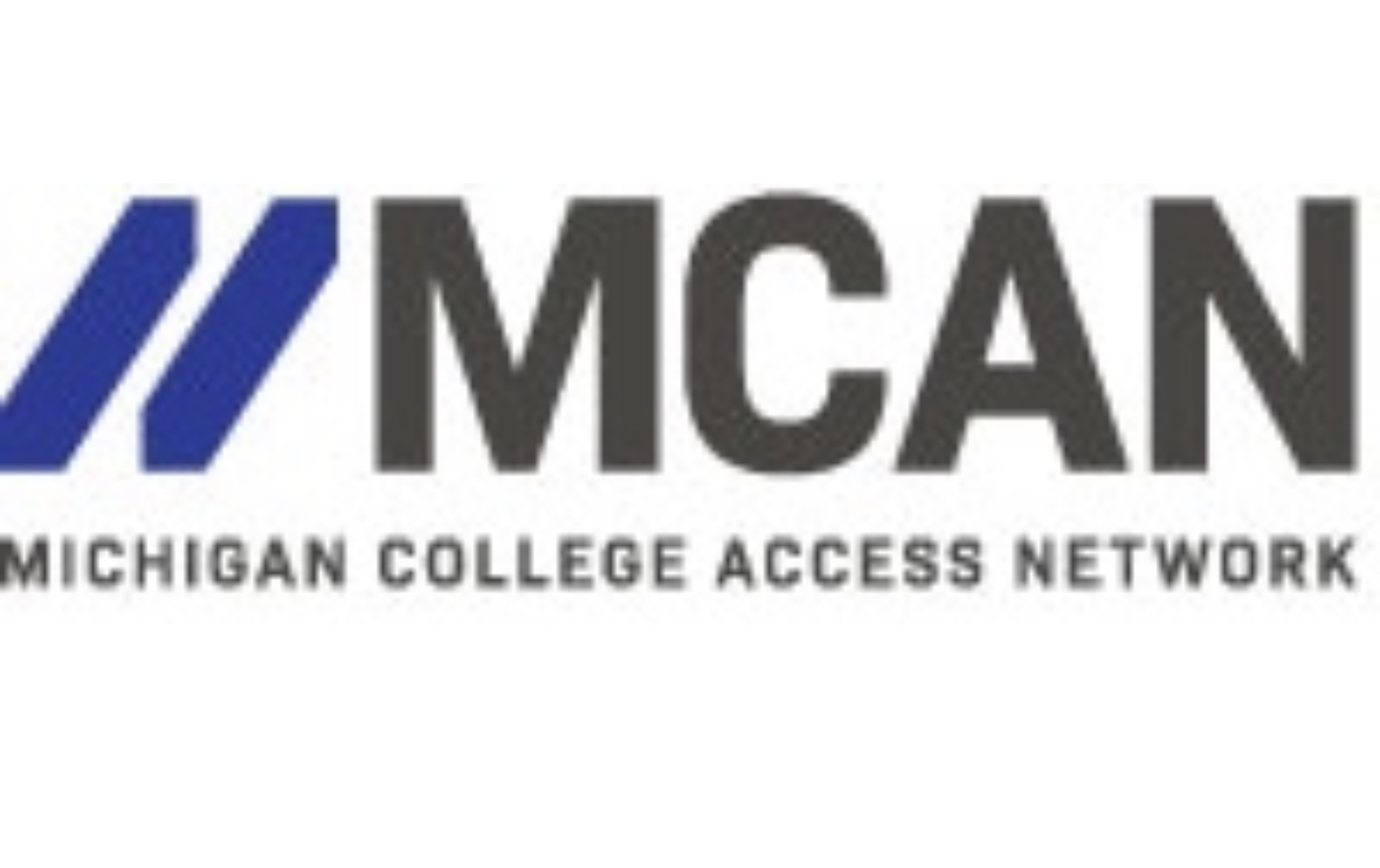UTOOLS

The UTOOLS-College Preparation Experience program is a yearly summer program that takes place at the University of Michigan-Dearborn campus, for a consecutive ten sessions.
UTOOLS-CPE is a hands-on experience, as participants learn from the University of Michigan-Dearborn, Career Transitions, Inc., and business community leaders about the college application process, financial aid, career services, academic and personal success and more.
UTOOLS Podcast
UTOOLS Podcast
The program is intended to prepare Wayne County, foster youth, ages 14-20 for higher education. Allowing them to be college ready with a clear mindset of future employment.
The program teaches students the Seven Habits of Highly Effective Teens, which is meant to aid them in improving and achieving their personal, social, and academic goals. Foster youth are introduced to many presenters and representatives from different campus organizations and departments.
For example, a registered nurse from The Children’s Hospital came to share her experience of working in the medical field and the college journey that she took to get there. They also got the chance to speak to a licensed cosmetologist, who shared her experiences with a different form of post-secondary education. These presenters gave students information on how to look for and apply to colleges and universities, how to choose a major, and see what the cost of tuition and living assistance may be available to them.
Education Plans
At this stage in the game, you’re laying the foundation for your high school career.
Fall: Think about extracurricular activities and your list of classes
Meet your guidance counselor.
Your counselor is ready and willing to help you make sense of your college and career options. As soon as you can, set up a meeting to talk about your plans for high school and the future.
Get involved.
Extracurricular activities (both school- and non-school-sponsored) are an important part of high school. Make the effort to get involved with groups, clubs, or teams that interest you. These activities are fun and make you a well-rounded student.
Pick the right mix of classes.
Make sure you’re enrolled in the appropriate and that you’re taking key core requirements, such as English, math, science, history, and a foreign language.
Winter: Consider a college savings plan
Make the grade.
Get off to a good start with your grades because they will impact your GPA and class rank. Although college seems like a long way off right now, grades really do count toward college admission and scholarships.
Explore your interests and possible careers.
Discuss your skills and interests with your guidance counselor and take advantage of any Career Day opportunities at your school. Spring/Summer: Learn about college and make summer count
Build your credentials.
Keep track of academic and extracurricular awards, community service achievements, and anything else you participate in, so it’ll be easier to remember later. It’ll come in handy when you want to highlight your accomplishments—such as when you’re filling out college applications or creating a resume.
Stay on track with your high school classes and activities and begin to narrow down the plan for your future.
Fall: Take the PSAT and explore careers
Take a practice PSAT as a sophomore will help prepare you for the real thing next year. It also allows you to release your name to colleges so you can start receiving brochures from them.
Start getting ready for the ACT.
Work with your guidance counselor to make sure you’re enrolled in the courses you need to prepare you for college or a career (English, math, science, history, and a foreign language).
Begin learning about the college admissions process. Get familiar with general college entrance requirements. The guidance counselor’s office, the library, college Web sites, and advice articles are all good sources of information.
Continue exploring potential careers. Research possible careers to learn about the tasks, education, and training necessary for each occupation.
Winter: Read and Write
Take on new roles. Stay involved with your extracurricular activities become involved in community service and other volunteer activities.
Read, read, read. Developing your reading skills will help prepare you for tests and make you a well-rounded individual.
Practice your writing. You’ll need good writing skills no matter what path you pursue, so work on those skills now to get prepared.
Get advice from your counselor. Meet with your guidance counselor to make sure you’re staying on track.
Spring/Summer: Keep your grades up and reach out to colleges
Keep your grades up. It’s important to remain focused on doing well in your classes. Remember that your grades affect your GPA and class rank—two factors that colleges consider in the admissions process.
Start your college search. Use websites like, College Bound, Big Future, Petersen’s, and the actual college or university website to decide what factors are important to you. Attend college fairs.
Get a summer job. Working will look good to prospective colleges and employers. Putting the money you earn away for college will also help you get a head start on a personal savings plan.
A key year in the college planning process. You’ll be taking standardized tests, narrowing down your college list, and learning more about financial aid.
Fall: Take the PSAT and start a list of colleges
Stay on track with your classes and grades. Meet with your counselor to see what you still need to take. Check on your class rank and your GPA. Even if your grades haven’t been that good so far, it’s never too late to improve.
Take the PSAT & organize a testing plan. Taking the test qualifies you for the National Merit Scholarship program, which means you could earn money for college. In addition, it’s a good way to practice for the SAT. Figure out when you’ll be taking important tests like the SAT, ACT, SAT Subject Tests, and AP exams, and mark the dates on your calendar. You’ll want to have plenty of time to prepare.
Evaluate your education options. Decide whether you want to pursue full-time employment, further education or training (such as a vocational-technical school, career college, or two-year or four-year college), or a military career. If you’re interested in attending a military academy, talk to your guidance counselor about starting the application process now.
Make a college list. Your list of colleges should include schools that meet your most important criteria (for example, size, location, cost, academic majors, or special programs). Weigh each of the factors according to their importance to you and develop a preliminary ranking of the schools on your list. Go to college fairs, attend college nights, and speak with college representatives who visit your high school.
Winter: Stay involved, organize college lists, and prepare for standardized tests
Stay involved with extracurricular activities. Taking on leadership roles and making a commitment to the same groups are more important than trying out tons of new activities each year.
Begin narrowing down your college choices. Make sure you have all the information you need about the colleges you’re interested in (entrance requirements, tuition, room and board costs, course offerings, student activities, financial aid, etc.). Then begin comparing the schools by the factors that are most important to you and rank your choices.
Prepare for standardized tests. Find out if the colleges you are interested in require the SAT, ACT, or SAT Subject Tests. Register to take the tests you need; most juniors take them in the winter or spring. You can take them again in the fall of your senior year if you’re unhappy with your scores.
Learn more about financial aid. Gather information about financial aid from the schools you’re interested in. High-school sponsored financial aid nights, college financial aid counselors.
Spring: Search for scholarships and gather recommendations
Prepare a challenging schedule for senior year. Meet with your counselor to determine what classes you’ll take next year and to make sure you’re on track for graduation. When you pick your classes, colleges do consider your senior year courses and grades.
Contact your recommendation writers. Ask teachers who know you well and who will have positive things to say. Letters of recommendation from a coach, activity leader, or adult who knows you well outside of school are also valuable.
Apply for a summer job or internship. Summer employment and internships in fields you’re interested in will look appealing on a college application or resume. The money you earn can also be used to help pay application and testing fees in the fall.
Summer: Visit colleges and work on application essays
Visit the campuses of your top five college choices. Take a tour and speak with the admissions and financial aid staff. You may also be able to talk to students.
Get advice from other college students. If you have friends or relatives in college, talk to them about what college life is like, especially if they attend a school you’re interested in. Although it’s important to hear what the admissions staff has to say about a school, it’s also important to get the students’ perspective.
Organize your financial aid information. Develop a plan that includes a list of the aid sources, requirements for each application, and a timetable for meeting the filing deadlines. Getting organized will make the process of applying a lot easier because you’ll know where to find important information.
Start working on your application essays. Compose rough drafts of the essays you’ll need for your college applications. Have a teacher read and discuss them with you so you can see what to work on. Make any revisions to your application essays and proofread final drafts.
Senior year is often an extremely busy time, with schoolwork, activities, and special events. Be sure to stay on track with the college admissions process. Get organized, be aware of deadlines, and don’t procrastinate.
Fall: Visit the schools and complete applications
Continue to visit schools & finalize your college list. Use the information you’ve gathered from college visits and your own research to decide which schools you will apply to. It’s okay to apply to colleges that you think will be more difficult to get into. But it’s also important to put a few safety schools (where you’re sure you’ll get in) on your list. Talk to counselors, teachers, and parents about your final choices.
Stay on track with your grades and extracurricular activities. Colleges will look at what you’ve done in your senior year, so stay focused.
Take standardized tests. Register for and take the ACT or. Be sure you have requested that your test scores be sent to the colleges of your choice.
Keep track of deadlines. You’ll be filling out lots of forms this year, so it’s important to know what form is due when. Make a calendar showing the application deadlines for admission, financial aid, and scholarships.
Ask for letters of recommendation. Give letter of recommendation forms to the teachers you have chosen, along with stamped, addressed envelopes so your teachers can send them directly to the colleges. Be sure to fill out your name and address and the school name on each form. Discuss your goals and ambitions with your teachers so they’ll be more prepared to write about you.
Meet with your guidance counselor. Make sure they know which colleges you want transcripts, score reports, and letters sent to. Give your counselors any necessary forms much earlier than the actual deadlines so they’ll have time to send the forms in.
Complete applications. Finish the application forms for the schools you’re interested in. Proofread them and make extra copies before you send them. Make sure you and your school’s guidance office have sent all necessary materials, including test scores, recommendations, transcripts, and application essays.
Continue your scholarship search. Apply for scholarships whose deadlines are approaching and keep searching for more scholarship and grant opportunities. Using online scholarship search tools is a great way to find potential aid. Ask colleges about what scholarships you may qualify for.
Winter: Follow up on applications and submit financial aid forms
Follow up on your applications. Verify with your counselor that all forms are in order and have been sent out to colleges. Check with the schools to make sure they have received all your information, including test scores, transcripts, and recommendations.
Submit financial aid forms. Go over your FAFSA Checklist and be ready to fill out the FAFSA after October 1st
Spring: Compare financial aid packages and make your final decision
Compare financial aid packages. Make sure to consider each financial aid award carefully. If you have questions, don’t hesitate to contact the financial aid office of the college to get more information. Financial aid is a key factor in deciding where you will attend.
Make your final college decision. If you’re not sure which offer to accept, make one more campus visit to the schools you’re considering. Make sure to send your deposit to your chosen school and ask your guidance counselor to send your final transcript to the college in June.
Complete enrollment paperwork for the college you will attend. Once you accept an offer, you should receive information from the college about course scheduling, orientation sessions, housing arrangements, and other necessary forms. Be sure to
complete all required paperwork by the appropriate deadlines.
Congratulations!
You’ve finished high school and are about to embark on an exciting new exciting new phase of life.
Good luck.
Cool college info!
1. Create a long list of POTENTIAL colleges (up to 20 or so) and explore their websites.
2. Research their academic programs and extracurricular options. Do their online virtual tours. Also, sign up for one of their virtual information sessions. Many colleges are even doing virtual interviews pre-application submission now, so consider signing up for those.
3. Narrow your list down to around 8-10 “Best Fit” schools you want to apply to.
4. Go to commonapp.org and create your Common Application. You will apply to most colleges using this portal. Add all the colleges you plan to apply to under “College Search.”
5. Create a Google Document with a list of ALL the required essay questions for each college on your list. A few colleges, including MIT & Florida A&M University, do not use the Common App. For those few, you will apply directly on their websites and you will find their required essay topics there.
6. Create a resume with EVERY activity, volunteer experience, job experience, and award you have had since the start of high school. Get your parents to help with this. They often remember better than you do.
7. Use life experiences from your resume and otherwise to think of a MAIN common app essay of up to 650 words (there are seven potential prompts, including a topic of your choice). This essay should be interesting, memorable, and specific to YOU. You can write about overcoming tragedy/obstacles, use appropriate humor, or even write about some really unique off-resume activity you do. Remember that this essay is going to almost every college on your list.
8. Tackle ALL the other required college essay supplements one by one (1-5 essays per college usually). Get help from qualified adults, teachers, and mentors in editing your essay(s). Keep track of all the deadlines. Write a little bit EACH week, focusing on essays for colleges with the closest deadlines first. Most college applications are due either November 1st for Early Action (you will hear back by Christmas) or January 1st for Regular Decision (where you will hear back by the end of March). Remember that “Early Decision” applications are BINDING, meaning you commit ahead of time to going to that college IF they accept you.
9. Request your teacher recommendations and transcripts for EACH college as soon as possible. Give your teachers at least 3-4 weeks to write your recommendations. Give your counselors & teachers an electronic copy of your resume and some bullet points about you that you would like them to highlight. Use Naviance, Scoir, or whatever system your high school uses to request these transcripts and recommendations.
10. Complete the FAFSA beginning as early as October 1st at studentaid.gov. The earlier the better, but it must usually be completed before March 1st for Michigan colleges. Also, submit any SATs taken to colleges DIRECTLY from collegeboard.org & any ACTs DIRECTLY from act.org.

Joy Douglas (left) and Antoinette Wirth (right) have been assisting youth in Foster Care for over 15 years beginning with CIAO (Creating Independence and Outcomes) in 2005. CIAO was funded by the Michigan Department of Health and Human Services in partnership with Casey Family Programs. Our goal is to guide those youth who were aging out of Foster Care to a life of independence—college, technical school, military, employment, etc. For the past 6 years, we have offered the U-Tools – A College Preparation Experience in partnership with the University of Michigan-Dearborn. Foster Youth ages 14-20 participated in the ten session program learning about career options, college access, financial aid, community resources, test taking skills, study habits, and the Seven Habits of Highly Effective Teens.

Big Thanks to MCAN for all the provided support for our UTOOLS Program! We couldn't have done it without you!
Before and after each session the foster youth are given a survey, that asks their agreement on their knowledge of college preparation. Some of the statements used were “I know about several resources that are available to help me be successful in college.”, which had a pre-survey agreement of 27% that later increased to 100% in the post-survey. Another statement example is, "I have clearly defined goals for what I want to accomplish in life", which had a pre-survey agreement of 64 %, that increased to 100% agreement in the post-survey.
